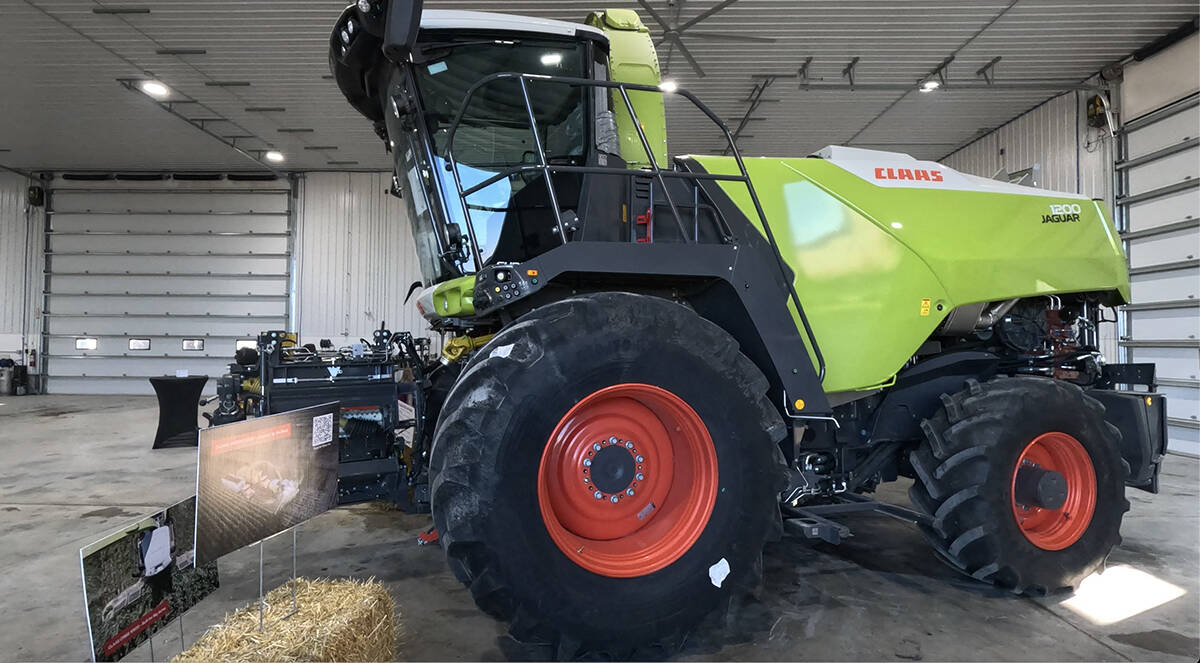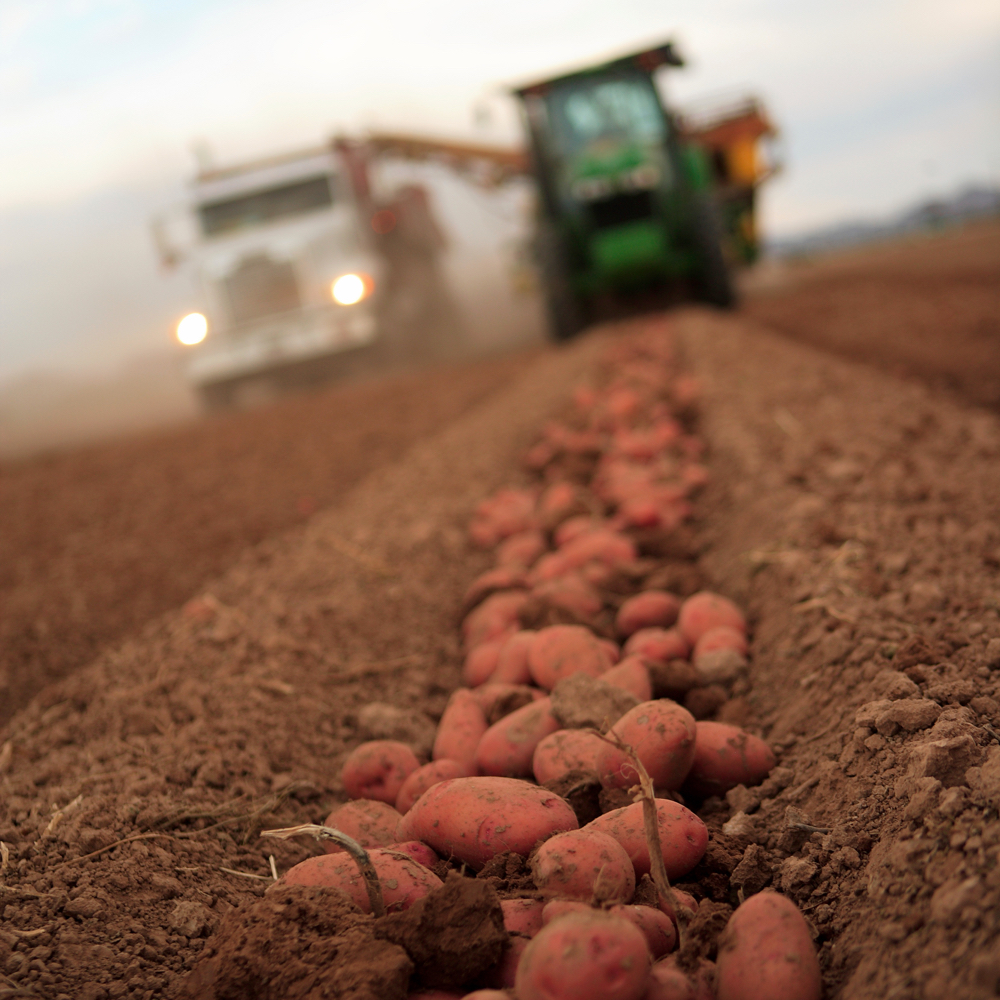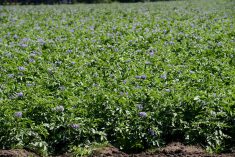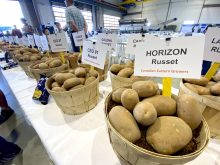A lack of late blight genotype oversight could mean the difference between viable fungicide control and the onslaught of new, resistant lineages.
Any actions taken by growers to limit late blight, such as tracking it through USABlight.org, can reduce direct losses, safeguard viable chemistries, discourage fungicide resistance and prevent storage rot.
Why it matters: Tracking and genotyping late blight strains earlier in the year in the United States can help forecast timing and strains that will arrive in Canada.
Read Also

Claas brings 1000 Series SP forage harvesters to Canada
In mid-August, Claas unveiled its new line of Jaguar forage harvesters at an event in Visalia, California, deep in the heart of that state’s dairy region.
United States President Donald Trump’s sweeping funding cuts, which led to the closure of the USDA-ARS research lab, are already affecting the agricultural sector’s disease research and oversight.
Zach Hansen, a former USDA-ARS research plant pathologist now working at Cornell University’s Boyce Thompson Institute, told attendees at the recent Ontario Potato Conference that the lab was unable to ascertain whether US-23, North America’s predominant late blight genotype, was responsible for Florida’s early outbreak before the closure.
While Hansen suspects it’s likely US-23, it’s critical to identify the lineage to confirm. Florida signals the upcoming late blight season, and early outbreaks in the south have historically forecasted the intensity of late blight pressure further north.
“We need to monitor genotypes to see if new lineages are emerging, see if there’s sexual reproduction emerging and communicate this information to growers. That’s critical,” he said.
Alarmingly, in 2023, two lineages — US-23 (North America’s predominate asexual genotype) and the less common US-25 — were tracked in the same New York county.
“They’re opposite mating types, think male-female, so they can reproduce sexually if they infect the same plant,” Hansen explained. “If that happens, we have big problems.”
No new genotypes indicated sexual reproduction in 2024; however, ongoing monitoring is necessary, especially as US-25 resists Ridomil and oxathiapiprolin (Orondis).
“This is the first known case of resistance to oxathiapiprolin I’m aware of in Phytophthora Infestans (late blight),” Hansen said, adding that US-25 isn’t as widespread or as fit as US-23. “This is a preliminary piece of data, but it’s something we really need to be aware of.”
He said the late blight genotypes of Northern Europe, Mexico and South America sexually reproduce, survive in soil and create different genotypes that start early and require aggressive top-tier chemistry management immediately and throughout the season.
“That’s a management nightmare we want to avoid,” he said.
No late blight-resistant varieties are available for commercial potato growers, so good cultural practices, such as crop rotation, using clean seed, early detection, an aggressive protectant fungicide program and encouraging resistant tomato varieties, are critical to mitigating late blight outbreaks.
In 2024, two New York State incidents highlighted the importance of extension education beyond commercial growers. A small upstate farm held back late blight-infected seed instead of sourcing clean seed, putting nearby commercial growers at risk. In April, a high-tunnel tomato operation suffered a significant late blight outbreak after mild temperatures failed to trigger an overwinter kill. Although this winter was strong, Hansen suggested growers monitor climate change impacts and increase scouting, even in covered operations.
Hansen cautioned that while US-23 is sensitive to the available fungicides, US-11, found in Minnesota and Washington State, is resistant to mefenoxam (Ridomil). This reinforces the need for, and importance of, rotating modes of action, monitoring strains and understanding a chemical product’s efficacy.
Ontario recorded its first official case of late blight US-23 on July 2, and by July 18, it had become well-established. Six days later, it was present in most growing regions, and by early August, many fields experienced top-kill due to the infection.
Mark VanOostrum, WD Potato agronomist, said 2024 started very wet in Ontario, with the water project sites capturing significant rainfall variability.
VanOostrum said while growers were more prepared for late blight mitigation in 2024, volunteer plants were an issue.
He said an informal survey of 2024’s worst versus the best fields revealed best practices for controlling or mitigating late blight pressure.
“Once late blight was established in susceptible varieties, the disease was never really under control, even with the best programs,” VanOostrum said. “The kitchen sink (approach) with all the specialty products, Ridomil, Orondis and Phostrol, appeared to edge out the suggestion in 2023, which was Orondis and Phos Acid for late blight.”
He said a proactive, regular fungicide spray program in early July with Phostrol correlated with reduced late blight in the best-performing fields, and Ridomil, applied in July and continuing into August, extended disease control.
Phosphorous Acid was used extensively in storage with no significant late-blight-related rot, considering the widespread field and visible tuber infection in some fields. VanOostrum said the 2024 crop was stored significantly better than in 2023 due to improved management protocols, including very few crops dug over 64 degrees and air conditioning assisting with skin set.
“We had to dig 50 per cent of the acres Oct. 1. It was pretty scary, but it did help break down some of the (storage challenges) whether it was soft rot or late blight.”
What the grower “toolbox” is missing is a market-ready late blight-resistant chip variety despite several disease-resistant variety trials because the chip quality suffers, said VanOostrum.
“The ask to develop varieties is out there, and it’s been successful,” he said. “It’s the (chip) quality that hasn’t driven those varieties to become mainstream.”
VanOostrum said that, realistically, late blight will show up early in 2025, and fungicides will be necessary in the second application when the plants are small.
“There’s technology to spray less dirt, to put more on the product, on the plant, when there’s 60 per cent dirt showing,” he said. “For best harvest, set those clear cold pulp temperatures. That was a huge difference-maker for storage. Air conditioning is key.”















